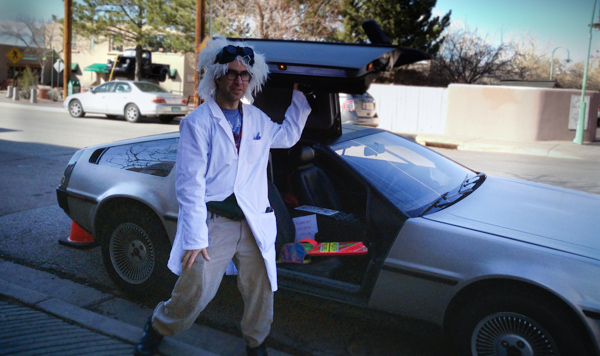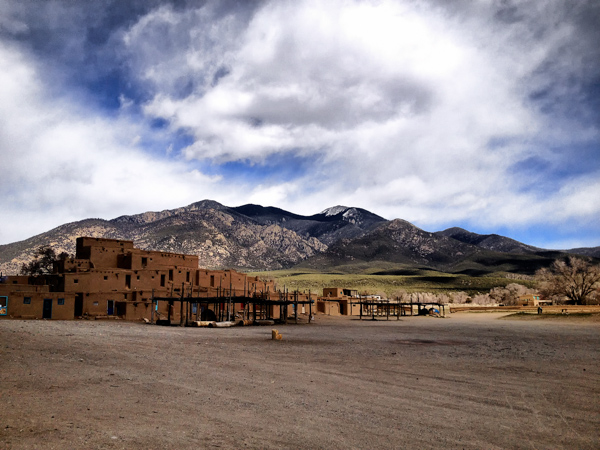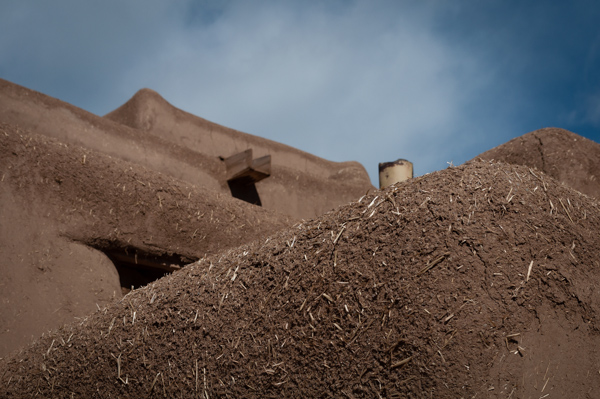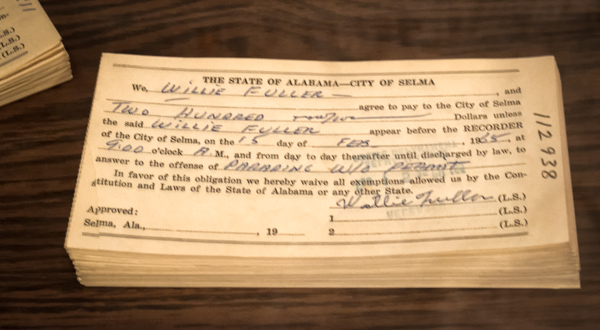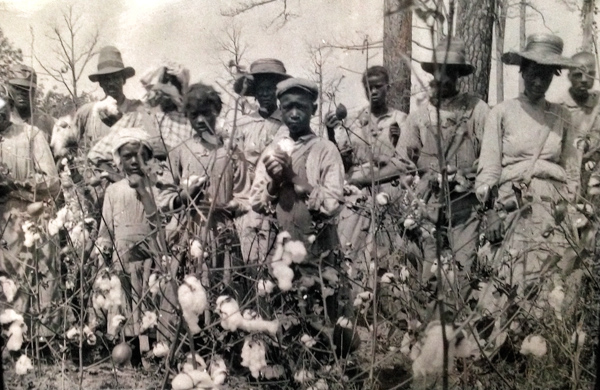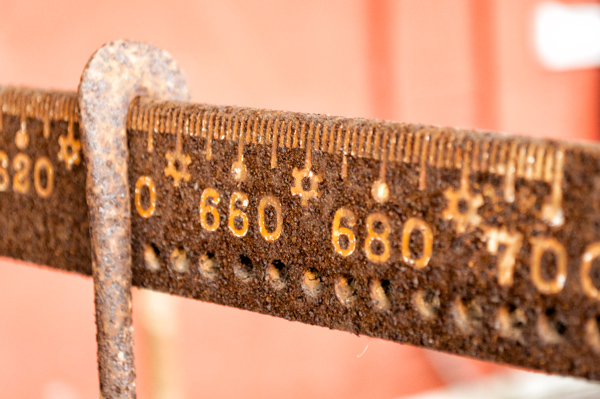Snow one day, blossoms over adobe walls the next morning...Spring in Santa Fe.....
New Mexicans and Eclairs.....
My grandmother was a woman ahead of her time. While most women of her generation were homemakers, circumstances forced my grandma Ida into the role of working mom. She ran a restaurant and then went to work at a hostess a “white tablecloth” place that was spiffy in its day. She worked hard and made sure that her girls had what they needed. This did not, however, include much in the way of home cooking. On the many nights when my grandmother worked late, my mom and her sisters ate warm dinners from the restaurant kitchen that Ida had delivered in a taxi.
So you get the picture - no "Grandma's home-baked cookies" for me. But Ida did something far better. Throughout my childhood she never appeared at our house without a pink pastry box holding éclairs or cream puffs from the local bakery. This was the Fifties when bakeries actually made recipes from scratch using real butter and cream. My love affair with baking began with those pink pastry boxes. There is nothing like being a kid with a small face and a relatively large cream puff. When you bite into it, there are gobs of cream squirting all over – waiting to be licked off with a joyfulness that I can still remember. Over time, I switched allegiance to the chocolate and pastry cream of those éclairs…..
What does all this have to do with Santa Fe? Well, it turns out New Mexicans have a thing about éclairs. We were standing in line waiting to order in a café one day when a waiter walked by with the biggest éclair I had ever seen. On his next pass I just had to ask, and he laughed saying, “I took one of these giant éclairs home and it took me four weeks to eat it!” Several other places in town feature big éclairs.
Giant eclairs of Santa Fe are far bigger than iPhones.
But nothing prepared me for the extra giant humungous eclairs we found in Charlie’s Spic and Span coffee shop in Las Vegas, NM. The giant cream puff above the door should have been a dead giveaway.
Cruising the pastry case I stopped dead in my tracks. If Santa Fe had a Giant Éclair, - Charlie’s makes extra giant humungous size éclairs – at least 10” long. All are made on the premises with great pride.
I didn't have the presence of mind when I snapped this photo to ask if the guy behind the counter was related to the painting behind him. Next time I need 40,000 calories I will drive back and ask....
Galisteo Basin Preserve
Galisteo Basin Preserve is a 13,550 acre "Stewardship Community" just south of Santa Fe. It includes trails, open space and several planned communities. The views go for 100's miles in almost every direction.
Best seat in the house, found somewhere along Cook's Loop.
Another Day in Santa Fe
Yesterday's cold front blew through, bringing hail and gorgeous light. Good thing we had finished our hike in the Galisteo Basin and were in the car when it started. Have I mentioned how much I love my iPhone? Took this picture from a moving car.
Back to the Future
Walking home from the bookstore the other day we encountered the crazed professor and his Back to the Future car. George Martin, author of the Game of Thrones, bought the Jean Coctaeu Cinema where he shows whatever he wants -- from highlights of Polish cinema to Barbarella. Back to the Future was the movie of the day.
MAD-rid
About 40 minutes south of Santa Fe are the oldest known mines in the US. Turquoise from the Cerrillos Hills has been found in artifacts dating back to 900 AD. Native American pottery glazes from the 1300's contain lead from this region. There was a flurry of mining activity for gold, silver, lead, coal and turquoise between 1880 and the turn of the century, but it did not last long.
Funky mining shack
In the mid sixties one of these old mining towns, Madrid (pronounced MADrid, emphasis on the first syllable) got a new lease on life when the owner of the town starting renting the broken-down shacks to bikers and artists for next to nothing. Over the years it shifted from being a hippie town of pot dealers and bikers into a vibrant, if quirky, artist community famous for its July 4th parade.
Typical Madrid shop
Walking down Madrid’s one street you find galleries, bikers, “new-age” oldsters, and families enjoying ice cream cones.
Out for a spin in Madrid
The most interesting artwork in Madrid was that of stone artist, Joshua Gannon. He is still mining the hills, gathering granite that he fashions into handsome and truly unique fountains.
Taos Pueblo
Throughout the Southwest there are thousands of archeological sites with the remains of lost and abandoned homes. Often whole communities moved or died because of lack of water. The Taos Pueblo is the exception. It has been continuously occupied for over a thousand years. Why? Location, location, location. This pueblo is nestled up against the Taos Mountains. Pueblo Peak at 12,305 not only provides a dramatic backdrop to the community, but a steady source of water for the people, animals and crops.
photo by David Ehrens
Rio Pueblo starts at Blue Lake in the Taos Mountains, runs through the Taos Pueblo and then into the Rio Grande. The log drying racks in front of the pueblo are used for drying corn and other crops.
Kiva oven is still used
Adobe showing a bit of age
As if sent by Central Casting, these free roaming ponies came galloping by for a drink just as we crossed the bridge over the river.
Quirky Albuquerque
Albuquerque is a big sprawling high desert city that runs right up the side of Sandia Mountain. Central Avenue, the main east/west thoroughfare, has seen the city’s good times and the bad. Currently, it is experiencing a bit of a renewal as an arts and entertainment district that began with the restoration of the KiMo Theater, a unique example of Art Deco-Pueblo Revival Style Architecture. It was quite eye-catching in the late afternoon sun.
Just down the street was the Library Bar and Grill.
Driving by at 30 miles per hour doesn’t give you enough time to enjoy the titles..
Sometimes you are just lucky when you pick a seat at the counter in a diner. Right next to the milkshake machine at Lindy's Diner is this faucet from nowhere sculpture - just sitting on the counter next to mixing bowls.
The waitress told us with a laugh that when the drunks come in they are truly flummoxed. There is real water running from the faucet, courtesy of a small aquarium pump and a clear plastic tube in the middle. Quirky…..
While all these quirky eye-candy images were fun, the stunner of visit to Central Avenue was an exhibit at the Robert Levy Gallery. On display were images from Gordon Park’s journey through the South to document segregation for LIFE magazine. These photos were recently found and were not part of the original 1956 LIFE photo essay entitled Restraints: Open and Hidden. These are not the black and white images of brutal conflict that many of us associate with the fifties and sixties, but rather color images of everyday life in segregated Alabama and Mississippi.
Friendly Grafitti
Here in Santa Fe not only do drivers back up to allow you a safe crossing zone, but the grafitti has a friendly tone.
Electric box in front of a lawyer's office on Paseo de Peralta, a main thoroughfare.
Baskets - Form and Function
Last week my friend took us on a tour of the contemporary art galleries in Santa Fe's Railyard District. This area was formerly the blighted remains of the Atchison-Topeka and Santa Fe railroad yards. After years of planning and community input a plan was created in 2000 to breathe new life into this neighborhood. Today, the Railyard is a vibrant and lively neighborhood of parks, open space, art galleries, retail, and public service buildings that honor the railroad's industrial past.
One of our first gallery stops was the TAI Gallery where works by Japanese bamboo artists were on display. While some looked like baskets one could possibly use but wouldn't dare, other creations were strictly sculptures made from traditional bamboo basket-making materials.
The following Saturday I wandered through the Railyard again, this time stopping in the Fleamarket and the Artisan's Market where I met Ericka Eckerstrand, a totally different kind of basket-maker. Eckerstrand has created a whole line of bags, baskets, and home accessories using vinyl outdoor fabric. Her sturdy, flexible and waterproof baskets are artful and extremely functional. The inspiration came to her while working in a shop that makes custom awnings. As someone who has spent hours wandering the aisles of hardware stores looking for non-traditional uses of materials - sheetrock lathing for bird armatures, for example - her creativity just tickles my fancy. Not to mention the fact that her baskets are far more affordable than the lovely Japanese ones above.
Take a look and click on the pictures to visit Eckerstrand's website.
Sleeves
Swatches of vinyl fabrics
West Texas to Santa Fe
Driving through West Texas is a journey through a forlorn landscape of energy fields - oil, natural gas and fracking. Pecos, Texas, one of the few outposts of civilization for the energy workers, appears to have more pick-up trucks per capita than anywhere else in the world. One of thing about these guys and their trucks - they are the ones you want to follow to lunch. They led us to the best brisket sandwiches ever in a little BBQ joint in Pecos.
It was interesting that when we crossed the border from Texas into Mexico the land changed-not dramatically, but reminiscent of the difference you feel when you cross the Connecticut River from New Hampshire into Vermont. Still wide open high brush country with dramatic skies - but somehow a little less forlorn, more tinges of green and yellow in the palette.
In all of stops along the way, the only place where it took us three tries to get a motel room was Roswell, New Mexico. We happened to be into town when there was a big demonstration of new Boeing planes going on, along with a conference.
Despite its reputation for UFO's, which they capitalize on, the city has two wonderful museums. The Anderson Museum of Contemporary Art and the Roswell Museum & Art Center. The latter houses the workshop of Robert Goddard, the father of American rocketry. Goddard fired off his first rockets at Worcester Polytech while he was still a physics student, but he moved to Roswell in the 1930's for the wide open space. The residents of Worcester were grateful. The museum also houses a lovely art collection.
Fraulein Bosch had a sluggish morning in Roswell. We wondered if she had been communing with extraterrestrial GPS units or perhaps was just a bit hungover. Happily she recovered once we left Roswell and got us here to Santa Fe. With its many one way streets, her services are still needed, but Fraulein Bosch's pronunciation of the many Spanish names is a terrible assault on the language. Even my gringa ears cringe at her interpretations of:
Buena Vista- BOOON a VeesTAH
Camino Lejp - CammiNO Lee Joe
Our first week here was one of atypical grey and cold, but the sun has returned. At dusk our adobe-lined street has a silver glow from the naked trees that turn from a dull brown to a silvery glow in those magic moments. The fast moving grey clouds heighten the drama.
Naked tree are lit with a silver glow at sunset
You know you are in Texas when you see this!
Land of the Longhorn
I was really glad that this truck was nowhere near me when we drove out of Austin on an icy morning. There were guys throwing sand onto closed highway ramps with shovels, and too many accidents to count.
Tidbits of Texas history
Growing up in New England and living a distinctly bi-coastal life I admit I had no real experience of chicken fried steak – only notions of something horribly fried and greasy. In Fredericksburg, Texas I learned that chicken fried steak is the direct descendent of wiener schnitzel, a favorite of the German immigrants who came to Texas in the 1840’s. Traditional wiener schnitzel is made with tenderized veal which is breaded and fried. Chicken fried steak is beef that is breaded and fried using the oil from fried chicken. Now I know and so do you...
The other really interesting fact about Fredicksburg, TX, a small town 80 miles west of Austin, is that in 1847 the the leadership of this early settlement successfully negotiated the only unbroken treaty with Native Americans. In order to meet the terms of the land grant given to German settlers around Fredericksburg they needed access to Comanche land. Eschewing the typical violent approach to Indians, this John Meusebach, had his men empty their guns before approaching the Comanches. It worked and over several days the Comanche chiefs and Meusebach hammered out an agreement. According to the Texas State Historical Society the agreement "allowed settlers to go unharmed into Indian territory and the Indians to go to the white settlements; promised mutual reports on wrongdoing; and provided for survey of lands in the San Saba area with a payment of at least $1,000 to the Indians. The treaty opened more than 3 million acres of land to settlement.” It is the only treaty ever negotiated directly between settlers and Native Americans and it was never broken.
Selma, Alabama
Heads up - This is a longer than average posting.
It is a few days after visiting Selma, Alabama and I am sitting in a hotel room in Junction, Texas, 120 miles from the Mexican border. It is supposed to go down to 14 degrees tonight, yet climate change is still considered unreal by many of the good folks of Texas. My goal for the evening is to write about our visit to Selma - the site of Bloody Sunday in March 1965. While I am busy looking for video images to go with my posting, David turns on the TV. On my laptop screen I see tear gas and billy clubs for Freedom Marchers and on TV Barack Obama is giving his fifth State of the Union Address. A half a century - lots of progress and not nearly enough. It gives me the chills.
We drove into Selma from Montgomery, following the trail of the famous Selma Freedom March. Along the way there were markers of the campsites. Just before crossing the famous Edmund Pettus Bridge the road is flanked by the National Voting Rights Museum and the Civil Rights Memorial Park.
Reverend Hosea Williams: Unbossed and Unbought
John Lewis: When We Pray, We Move Our Feet
Amelia Boynton Robinson & Marie Foster: Don't Let Nothing Turn Them Around
There is a peaceful, almost Asian, feel to the wooden entrance to the paths along the river.
Civil Rights Memorial Park - Footpath Entrance
Down along the footpaths there are several simple wooden memorial plaques to a few of the many who lost their lives in this struggle, both in Selma and throughout the South. Some names were familiar to me, others were not.
Jonathan Daniels was murdered in Fort Deposit, Alabama on August 14, 1965. The valedictorian of the 1961 class of Virginia Military Institute, Jonathan Daniels was pursuing postgraduate studies when he decided the ministry was the path he wanted to follow. As a seminarian in training he answered Martin Luther King’s call to the ministry to support racial equality and headed south. He became involved in numerous civil rights actions. From the Virginia Military Institute archives: “In August 1965 Daniels and 22 others were arrested for participating in a voter rights demonstration in Fort Deposit, Alabama, and transferred to the county jail in nearby Hayneville. Shortly after being released on August 20, Richard Morrisroe, a Catholic priest, and Daniels accompanied two black teenagers, Joyce Bailey and Ruby Sales, to a Hayneville store to buy a soda. They were met on the steps by Tom Coleman, a construction worker and part-time deputy sheriff, who was carrying a shotgun. Coleman aimed his gun at sixteen-year-old Ruby Sales; Daniels pushed her to the ground in order to protect her, saving her life. The shotgun blast killed Daniels instantly; Morrisroe was seriously wounded.” Daniels death shocked the Episcopal Church into confronting the reality of racial inequality. Coleman was acquitted by an all white jury.
James Earl Chaney, was murdered in Philadelphia, Mississippi, along with Michael Goodman and Andrew Schwerner, on June 21, 1964. They were killed by members of the Ku Klux Klan and buried in a nearby levee. It took multiple prosecution efforts over 30 years to bring only a semblance of justice for these murders. None of those convicted in the 1967 trial served more than six years. The presiding federal judge was infamously quoted as saying, "They killed one nigger, one Jew, and a white man. I gave them all what I thought they deserved.”
If you want a refresher on Bloody Sunday, the march whose coverage interrupted national television viewing of the movie Trials at Nuremberg and pushed Lyndon Johnson into sending federal troops to protect marchers and ultimately the passage of the Voting Rights Act, here it is:
When we planned our route for this trip and I saw that we would be passing through Selma, I knew I wanted to see this place that was so important in Civil Rights history, especially after I read that the guides in the National Voting Rights Museum were people who had participated in the famous Freedom March. So I was very disappointed when we walked across the street from the Civil Rights Memorial Park to the National Voting Rights Museum and discovered that it was closed, although the website led us to expect otherwise.
At the Selma Visitor’s Center we learned that the Voting Rights Museum and the Slavery Museum no longer have the funds to stay open 5 days a week. The helpful woman at the Visitor Center suggested that we visit the Old Depot Museum because it is home to a diverse collection of artifacts from all of the peoples who have lived in the Black Belt of Alabama. It includes some significant Civil Rights artifacts she assured us.
So off we went and, instead of a Freedom Marcher being our guide to Selma’s Civil Rights history, we had Beth Spivey, the sole employee of the Old Depot Museum. Spivey is a self-described “redneck” and is too young to have witnessed Bloody Sunday. Yet she is passionate about her work and, when it comes to preserving the history of Selma and communicating it to the many children and groups that come through the Museum, she is nothing less than a force of nature.
Spivey collected our money and launched into the Depot's story. Originally it was a munitions factory that supplied arms to the Confederate Army, but the Union Army put an end to that in 1865. The Depot was rebuilt in 1891 and has served many functions over the years – from train depot to municipal offices. Our tour started with a look at how the building was when Spivey walked in the door. It had been broken into office spaces with dropped ceilings and dingy display cases - not very appealing. But down at the end of the building the remnants of office space are gone. With the help of a few volunteers and a miniscule budget, the brick walls and wooden ceiling beams were cleaned and exposed to create a space that feels like a museum, not a dusty collection of “stuff.” Large murals by Felix Gaines provide a powerful backdrop to the Civil Rights artifacts in this room.
Why was this the first renovation project she took on? Why the Civil Rights collection and not the military, Native American or other collections? In her first couple of days on the job Spivey learned that she had to give talks to visiting school groups about Selma’s Civil Rights history. In a county that is 70% Black she had to come up to speed quickly and get it right. Although she didn’t state it directly I am guessing that the materials and history she found in the Old Depot affected her deeply and informed her action plan.
It is with great passion that she talks about slavery using a real receipt for a teenage slave. When Spivey learned that one of the teachers in a school group had been on the Pettus Bridge on Bloody Sunday, she asked all the students to turn around and thank this teacher. “You need to thank those who have come before you for all that they have done. You need to show respect to your elders. Everyone has a story that you don’t know.”
Beth Spivey is a woman with energy, passion and big hopes for the Old Depot Museum. We wish her well.
Savannah
Our first night in Savannah we walked by Kobo Gallery and I knew that I had to visit when it was open. There was a piece in the window that I had to see up-close. It was a sculpture that I thought was ceramic, but couldn’t imagine how it could have been fired. The next day I discovered that it was made from wood and, better yet, the artist who made it was in the gallery. Dicky Stone has started learning about wood from his grandfather and now makes these gorgeous pieces that are hard to describe. Please click on the image below to look for yourself at his work.
Dick is a gracious and charming man who left college with a degree in English literature. We stood around the gallery and had a far-ranging conversation about Savannah's art world and English literature. It was fun to compare classics that we reread in later life and decided that they really don't cut it. Stone sent us off with a custom made list of spots to see in Savannah and terrific coffee shops to enjoy. And so we spent our day wandering through the city’s gracious squares – stopping to look at art, but there was no art-making on my part. Just fun iphone snaps of yet another lock shop and the most well-used space I have seen in a used bookshop.
If only our wits and hearts could be fixed.....






